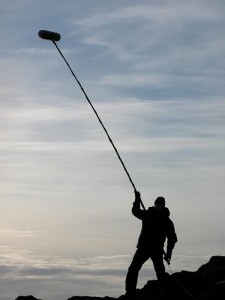The Plunge

Eric DeFonso has been toying with the idea of getting into sound recording for some time. On his blog, he reports that he’s finally taking the plunge.
Eric hesitated about getting into sound recording for the same reason I did originally — he thought all the good recordings had been made already. But I think nothing is further from the truth, and it seems I managed to convince him of that. Now he’s signed up for the 2010 Macaulay Sound Recording Workshop.
Here’s a quick thought experiment. Take a moment to think about how many people you know who take bird photographs as a hobby. Now think about how many amateur sound recordists you know. The second number is far smaller than the first, of course.
Here in Colorado alone, the photo editor for our journal Colorado Birds has a list of over 30 people he can call on when he needs publication-quality bird photos. The list isn’t even close to comprehensive, and it only samples amateurs. Meanwhile, I can only think of six people in the state who record bird sounds at all — and that includes a couple who are just getting started, one who basically retired from sound recording years ago, and one who barely spends any time in the state anymore.
Why are people still taking bird photos? Why are they still taking up the hobby? Haven’t all the good photographs been taken? No, of course they haven’t. So why worry that all the good sounds have been recorded?
People take photos for many reasons — for enjoyment, for aesthetic pleasure, to memorialize their experiences, to teach themselves something. All these reasons are just as valid when it comes to sound recording. A sound recording can snap you back to a particular place and time, right into the middle of an old experience, in a way that even a photo can’t do. It’s one of the reasons why radio is still alive and well in the era of the Internet.
Just some things to think about if you, too, have been tempted to take the sound recording plunge.
4 thoughts on “The Plunge”
You’ll be needing one of those tall poles to capture flight notes, eh?
Or maybe a mini mike-equipped dirigible to compliment your speed boat recording rig.
Good to hear Eric is taking that class and rigging up!
So I’ve been doing sound recording for a little over a year now, but I still haven’t taken the plunge in terms of getting my own equipment. I’ve been using loaned equipment in the form of a shotgun mic and a Marantz PMD660 to record and analyze jay dialects for a project here in Florida. I’ve been increasingly using that to record anything else making a peep in the scrub and flatwoods around here and I’ve been having a lot of fun doing it (I just got bad Limpkin cuts this weekend! 🙂 ). What are your recommendations for a tight-budgeted student interested in taking the personal plunge?
I’d love to give sound recording a try, thanks for your enthusiastic promotion!
Another good reason for bird photography and sound recording is to document rare birds. Most of the time this is done with a photo, but back in 2007 in south Texas a Barred Antshrike was recorded. The bird was never seen, but the recording was good enough to identify it. This was the first time this species and family has ever been observed in Texas.
http://www.texasbirds.org/tbrc/ar2007.html
To add to my bird photography I started recording bird songs a couple of years ago, first with a Sony Minidisc and a Sennheiser mic, not specifically for directional bird recording, but for general speech and song (I bought it for Dragon speech recognition), but I found the set-up cumbersome, to lug along with my big DSLR camera and long lens, also unsatisfactory. So I sold those on Ebay and bought an Olympus LS_10 and am very happy with it. I think for me as an amateur it does a superb job of recording on the fly. I pick early morning hours before the traffic gets moving and so avoid a lot of noise pollution. In my opinion in order to get birders interested in recording you need equipment like that, which is not very expensive, easy to carry along will all the other gear, and does a good job in producing an editable recording.
Comments are closed.